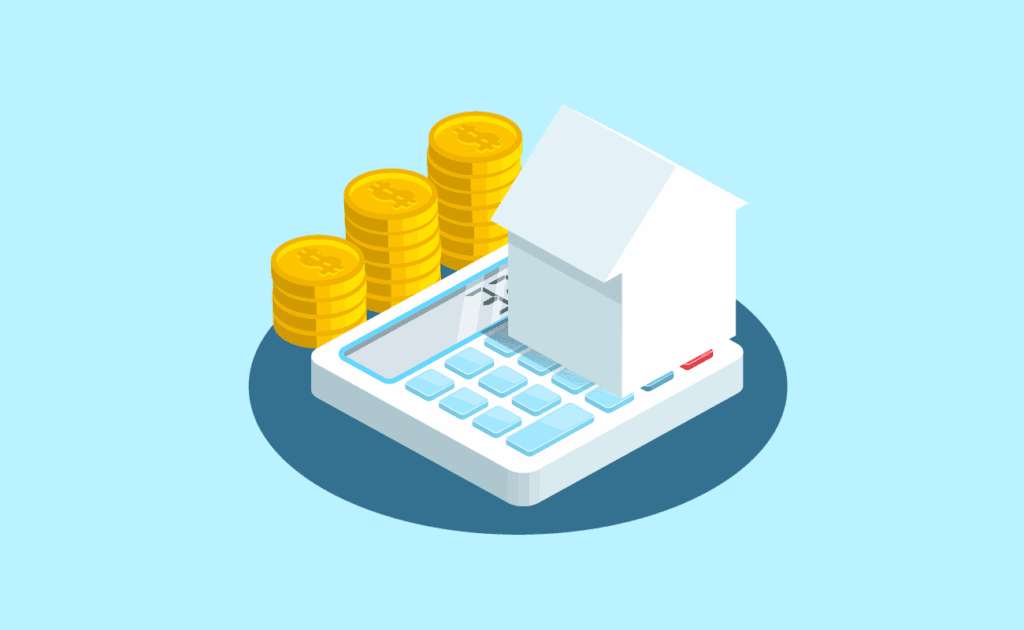Real estate investment has become one of the most promising opportunities in the Arab world, with countries like the UAE, Egypt, Saudi Arabia, and others witnessing remarkable growth in residential, commercial, and mixed-use developments. As the market expands, so does the need for tools that help investors make smarter decisions.
One of the most valuable resources investors can use is a real estate investment calculator tool. This tool allows potential buyers, investors, and professionals to analyze the financial performance of a property quickly, clearly, and accurately. It enables them to estimate profitability, assess risks, and compare various investment options before committing significant capital.
This article offers a detailed guide on how to develop such a calculator tool, focusing on the specific needs and characteristics of the Arab real estate market. It explains essential financial metrics, features to include, integration with local MLS platforms, development steps, and practical examples.

Why Arab Investors Need a Real Estate Investment Calculator Tool
The Arab real estate market is diverse and rapidly evolving. Investors face challenges such as varying property prices, fluctuating rental yields, different legal frameworks, and complex financing options. Many investors rely on personal experience or advice from brokers, which can lead to biased or incomplete decisions.
A calculator tool solves this problem by providing:
- Objective Analysis: Investors can rely on data-driven metrics rather than gut feeling.
- Time Efficiency: Instantly analyze multiple properties without lengthy manual calculations.
- Scenario Testing: Evaluate different financing plans, rental rates, and expenses.
- Informed Decision-Making: Compare returns across cities and property types.
- Accessibility: A simple, user-friendly interface encourages more investors to evaluate opportunities thoroughly.
For Arab investors, these benefits are critical to avoid costly mistakes and maximize their returns in a competitive market.
What Is a Real Estate Investment Calculator Tool?
At its core, a real estate investment calculator is a digital tool (web-based or mobile app) that computes financial indicators based on user input property details. It transforms raw data like purchase price, mortgage terms, rental income, and expenses into meaningful metrics that reflect profitability and risk.
Key outputs from such a tool typically include:
- Net Operating Income (NOI): Rental income minus operating expenses.
- Capitalization Rate (Cap Rate): NOI divided by property price, showing investment yield.
- Cash-on-Cash Return: Annual pre-tax cash flow divided by the total cash invested.
- Cash Flow: Net income after mortgage payments.
- Return on Investment (ROI): Percentage gain or loss relative to the initial investment.
- Payback Period: Time required to recoup the initial investment through cash flows.
- Mortgage Payments: Monthly principal and interest costs.
These figures provide a comprehensive financial picture, helping users compare properties and choose wisely.
Core Financial Metrics Explained Simply
Before building a calculator, it’s important to understand what each metric means and why it matters.
1. Gross Rental Income
This is the total expected rental income a property generates before expenses. For example, if a Dubai apartment rents for AED 4,000 monthly, the gross rental income is AED 48,000 annually.
2. Operating Expenses
These include property management fees, maintenance, insurance, property taxes, utilities (if paid by the owner), and any other recurring costs. They reduce the gross rental income and affect profitability.
3. Net Operating Income (NOI)
NOI is the rental income left after paying operating expenses but before mortgage payments or taxes. It reflects the property’s ability to generate profit from operations.
Formula:
NOI = Gross Rental Income – Operating Expenses
4. Capitalization Rate (Cap Rate)
Cap Rate shows the percentage return an investor can expect on the property price, based on NOI.
Formula:
Cap Rate = (NOI / Property Price) × 100
For example, a property with AED 36,000 NOI and a purchase price of AED 500,000 has a cap rate of 7.2%.
5. Cash-on-Cash Return
This metric measures the annual return relative to the actual cash invested (down payment plus closing costs), rather than the total property price.
Formula:
Cash-on-Cash Return = (Annual Cash Flow / Total Cash Invested) × 100
This helps investors understand how efficiently their cash is working.
6. Cash Flow
Cash flow is the net income after mortgage payments.
Formula:
Cash Flow = NOI – Debt Service (Mortgage Payments)
Positive cash flow means the property generates income after covering debts, while negative cash flow indicates an out-of-pocket expense.
Key Features to Include in Your Calculator Tool
To make the calculator practical and relevant for the Arab market, focus on these essential features:
Bilingual Support (Arabic and English)
Language accessibility is critical for wide adoption in the Arab world. The tool should support Arabic fully, including right-to-left text formatting, while offering English as an option for international investors.
Currency Flexibility
Support major currencies like AED (UAE Dirham), EGP (Egyptian Pound), SAR (Saudi Riyal), and QAR (Qatari Riyal), and allow users to switch between them. Incorporate real-time or regularly updated exchange rates for accurate conversions.
Integration with MLS Platforms
MLS platforms like ArabMLS, DubaiMLS, and The Official Egyptian Real Estate Platform offer verified property listings, prices, rental averages, and tax data. By integrating these platforms, your calculator can auto-fill property details and provide users with real-time, accurate market data, eliminating guesswork.
For instance:
- Pull current listing prices and recent sale history from DubaiMLS for properties in Dubai.
- Use rental yield data from ArabMLS to estimate realistic rental income for residential properties.
- Access tax and fee details from The Official Egyptian Real Estate Platform to calculate accurate operating expenses.
Adjustable Financing Options
Allow users to enter different mortgage scenarios, including down payment percentage, interest rate, loan term, and payment frequency. This flexibility lets investors test the impact of various financing plans on cash flow and returns.
Scenario Analysis and Comparison
Enable side-by-side comparison of two or more properties or financing scenarios. Investors can compare how changes in rental income, expenses, or mortgage rates affect profitability.
Mobile-Friendly Design
Many investors in the Arab world primarily use smartphones and tablets. A responsive design ensures the calculator is accessible and easy to use on all devices.
User-Friendly Interface
Keep inputs simple and intuitive, with explanations or tooltips for financial terms. Avoid overwhelming users with excessive technical jargon.
Step-by-Step Guide to Developing the Calculator
Step 1: Define Your Tool’s Purpose and Audience
Decide whether the tool will target beginner investors, real estate professionals, or institutional investors. Understanding your audience determines the level of complexity, features, and user interface design.
Step 2: Identify Required Inputs
Typical inputs include:
- Property price
- Rental income (monthly or yearly)
- Operating expenses (management fees, maintenance, taxes, insurance)
- Financing details (down payment, loan interest rate, loan term)
- Vacancy rate
- Property appreciation rate (optional)
Step 3: Design the User Interface
Sketch a clean layout dividing the input sections clearly:
- Property details
- Income and expenses
- Financing terms
- Results display
Use dropdown menus for currency and MLS data source selection.
Step 4: Program Financial Calculations
Implement formulas for all key metrics. Be sure to handle edge cases like zero mortgages, high vacancy rates, or missing data.
Step 5: Integrate with MLS Platforms
Use APIs provided by ArabMLS, DubaiMLS, and The Official Egyptian Real Estate Platform to fetch real-time property details.
- Set up API calls to retrieve property prices, rental rates, and tax data.
- Auto-populate fields when users select a property.
- Ensure data privacy and secure connections.
Step 6: Testing and Validation
- Test calculations with known properties to verify accuracy.
- Collect feedback from real estate agents and investors to improve usability.
- Optimize for mobile and desktop platforms.
Step 7: Launch and Promote
Make the tool accessible through a website, or app store, or embed it in real estate portals. Use social media, real estate forums, and partnerships with agencies to raise awareness.
Practical Example: Analyzing a Property in Cairo Using The Official Egyptian Real Estate Platform
Consider a residential apartment in New Cairo listed at EGP 3,000,000 on The Official Egyptian Real Estate Platform. The monthly rent is EGP 15,000, and annual expenses (including taxes, maintenance, and management) total EGP 30,000.
An investor plans to pay a 25% down payment and finance the remainder with a loan at 10% annual interest over 15 years.
Using the calculator:
- Gross Rental Income: 15,000 × 12 = EGP 180,000
- Operating Expenses: EGP 30,000
- NOI: 180,000 – 30,000 = EGP 150,000
- Cap Rate: (150,000 / 3,000,000) × 100 = 5%
- Mortgage Payments: Calculated monthly payment is approximately EGP 23,000
- Cash Flow: 150,000 / 12 = 12,500 per month NOI – 23,000 mortgage = Negative cash flow of EGP 10,500 monthly
This analysis indicates the property will have negative cash flow under current conditions, guiding the investor to reconsider financing terms, and rental price, or look for better deals.
Challenges in Developing and Using the Calculator
1. Market Data Accuracy and Availability
Arab real estate markets sometimes suffer from inconsistent data reporting. Integrating reliable MLS platforms mitigates this but requires constant updates and validation.
2. Currency and Inflation Fluctuations
Some Arab countries experience currency volatility and inflation, affecting property prices and rental yields. Including inflation-adjusted returns or currency conversion tools can improve accuracy.
3. Diverse Taxation and Legal Fees
Each country has unique property tax rules, registration fees, and transaction costs. The calculator should allow customization to include these local charges.
4. User Financial Literacy
Not all users may understand investment metrics fully. Providing clear explanations, tutorials, or even AI-driven advice can help.
Benefits for the Arab Real Estate Industry
- Empowers Investors: Better analysis leads to more informed decisions.
- Improves Market Transparency: Public availability of such a tool encourages openness.
- Boosts Real Estate Portals: MLS platforms can add value by embedding calculators.
- Supports Real Estate Professionals: Agents and brokers can demonstrate investment potential clearly.
Conclusion
Developing a real estate investment calculator tool tailored for the Arab market is a strategic move that can empower investors and professionals alike. By focusing on user-friendly design, integrating with trusted MLS platforms like ArabMLS, DubaiMLS, and The Official Egyptian Real Estate Platform, and supporting local languages and currencies, the tool becomes a game-changer in real estate investment decisions.
As real estate continues to grow across the Arab world, technology solutions like this calculator will play a vital role in promoting a data-driven investment culture and maximizing financial success.










